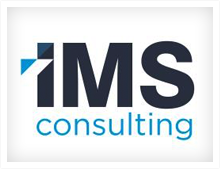The Internet of Things (IoT) is revolutionizing the way we interact with our physical environment, and when it comes to facility management, the integration of IoT with ARCHIBUS offers a wealth of opportunities to create smarter, more efficient workspaces.
The Power of IoT in Facilities Management IoT devices are embedded with sensors and network connectivity that allow them to collect and exchange data. In facilities management, these devices can monitor various aspects of a building’s operation such as energy usage, space utilization, and environmental conditions. This real-time data collection is invaluable for facility managers who are tasked with optimizing building performance.
ARCHIBUS: A Platform for Integration ARCHIBUS is a leading provider of real estate, infrastructure, and facilities management solutions. By integrating IoT devices with ARCHIBUS, facility managers can enhance their decision-making process with actionable insights derived from the vast amount of data collected by IoT sensors.
Benefits of IoT and ARCHIBUS Integration
- Energy Efficiency: IoT-enabled HVAC systems and lighting can be controlled through ARCHIBUS to reduce energy consumption based on real-time occupancy data.
- Predictive Maintenance: With IoT sensors, facility managers can predict equipment failures before they happen, scheduling maintenance only when necessary and avoiding downtime.
- Space Optimization: IoT devices can track space usage patterns, allowing managers to make informed decisions about space allocation using ARCHIBUS software.
- Enhanced Security: Integrating IoT security systems with ARCHIBUS enables a centralized view of access controls and surveillance, bolstering building security.
 The Future Is Smart The integration of IoT with ARCHIBUS is not just a trend; it’s the future of smart facility management. As technology advances, the possibilities for this integration will expand, leading to even greater efficiencies and innovations in the way we manage and experience our built environments.
The Future Is Smart The integration of IoT with ARCHIBUS is not just a trend; it’s the future of smart facility management. As technology advances, the possibilities for this integration will expand, leading to even greater efficiencies and innovations in the way we manage and experience our built environments.
Embrace the Change For organizations looking to stay ahead of the curve, now is the time to explore the integration of IoT with ARCHIBUS. The benefits are clear, and the potential for transformation is enormous.
As we continue to navigate the rapidly evolving landscape of facility management, embracing IoT and ARCHIBUS integration will be key to creating smarter, more responsive, and sustainable buildings.
About IMS Consulting
For more than a decade, IMS Consulting has delivered the full scope of Archibus-related services to both government and commercial clients. As a Virginia Certified Small Business, IMS Consulting provides our clients with personalized attention by experienced Archibus-certified consultants. Our experts work with our clients to thoroughly understand how they do business, identify their unique needs, pinpoint opportunities to better manage their infrastructure, employ more efficient work processes, and make smarter capital budgeting decisions—both today and over the long term.
IMS Consulting specializes in the implementation of Archibus, the #1 real estate, infrastructure & facilities management solution in the world. Archibus is the global leader in streamlining how you manage your real estate, infrastructure, and facilities. Centralize your data, planning, and operations onto one seamless platform backed by 35 years of innovation and the world’s largest support network. Reduce costs, enhance sustainability, and create a better workplace by transforming how you connect with people, places, and processes.


